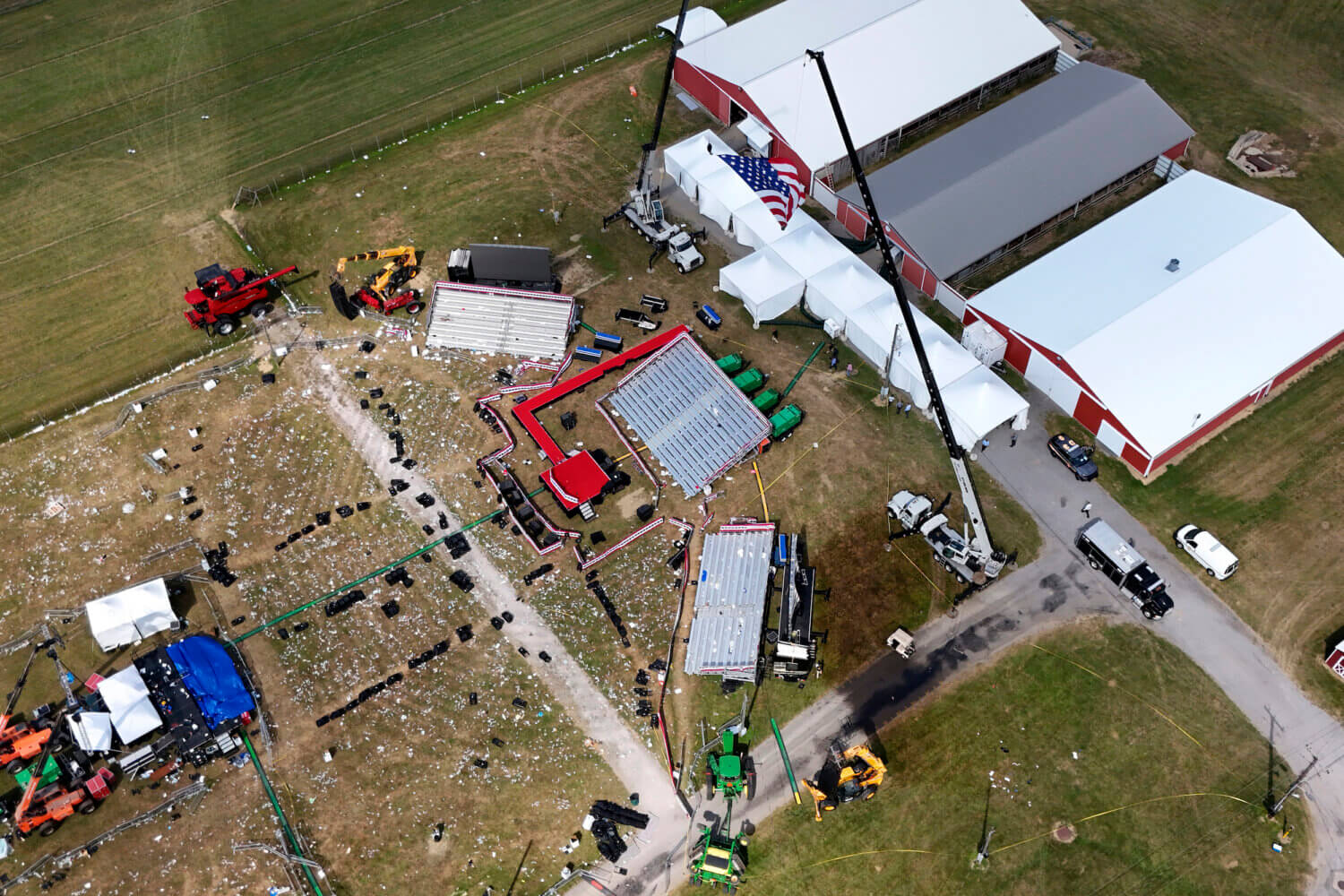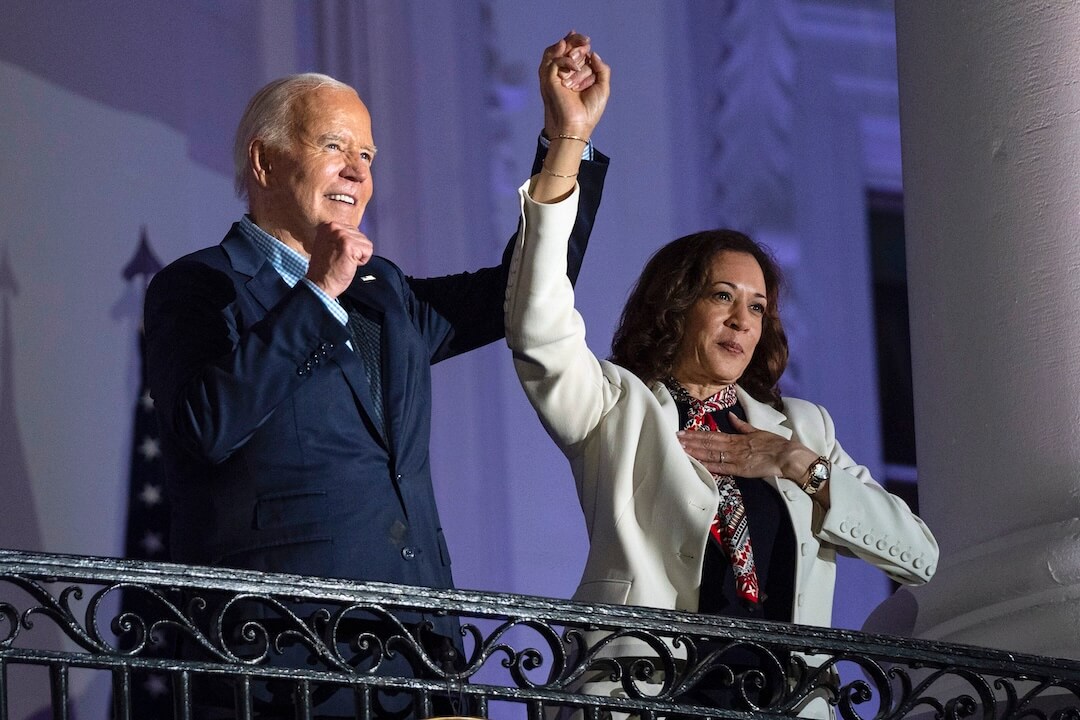When former President Donald Trump stepped onstage at a campaign rally in Butler, Pennsylvania, Saturday, The Washington Post had just two journalists on the ground to cover the moment. An additional 30 to 40 were watching remotely, waiting to jump in if something newsworthy — like a vice president pick announcement — happened.
Not even 10 minutes later, gunshots rang out. Secret Service agents rushed Trump, who had been struck in the ear by a bullet, off the stage. By the hour’s end, the number of Post journalists working on the story ballooned to 200 to 250 people.
Coverage of the shooting — the first assassination attempt to injure a U.S. president since the 1981 plot against Ronald Reagan — has been an enormous undertaking. Hundreds of journalists, perhaps more, have worked around the clock since Saturday, painstakingly confirming details about the shooting even as rumors and conspiracy theories fly on social media.
Reporters first had to establish the source of the noises that had preceded the Secret Service’s decision to rush Trump offstage. Information was limited to what journalists could see, said Washington Post deputy managing editor Mark W. Smith, who helped guide the outlet’s coverage Saturday. At that point, all they had seen was Trump touch his ear before Secret Service agents tackled him and ushered him away. They couldn’t yet confirm that the noises had been gunshots, and even though they could see Trump’s bloody ear, they didn’t yet know the cause.
“We’re not going to get out ahead of our skis and call it something that it’s not before we know it to be true, either by statements from officials — including Trump himself and his campaign and his apparatus — or people who are physically there who can tell us exactly what they saw,” Smith said. “So it starts, of course, with exactly what we saw. And then we start to layer in the official confirmation.”
Smith said the Post was greatly aided by national political reporter Isaac Arnsdorf’s and photojournalist Jabin Botsford’s work on the ground. They could talk directly to law enforcement there, which helped the Post report information more quickly. Botsford was also wearing glasses that had a camera attached to them, giving the Post video footage from his point of view in addition to the images he had captured on his news camera.
The media’s cautious reporting has attracted criticism from the right, which has accused outlets of downplaying the shooting. But when news outlets initially described the gunfire as “loud noises” or “pops,” they weren’t trying to obfuscate events. They were avoiding speculation during a chaotic breaking news situation.
“As a breaking news editor, one of the things I’ve always done is say, ‘I’d rather be right than first,’ and it’s OK sometimes to take a step back,” said Philadelphia Inquirer deputy managing editor of live coverage and breaking news Molly Eichel. “It’s OK to slow down a little bit, especially when we don’t have those primary sources that we need to have … because if we’re not right, we don’t serve our audience.”
Aric Toler, a reporter on The New York Times’ visual investigations team, said one of his first priorities upon hearing about the shooting was establishing the geography of the scene. Compared to the investigations he’d done on events in other parts of the world, like Gaza, his work in this case — a fairground in a small town in Pennsylvania — was fairly straightforward.
“There’s ultra-high-resolution satellite imagery. There’s Google Street View. There’s a million cameras of people who were attending the thing and livestreams and all that stuff,” Toler said. “You see a guy on a roof, and there’s not that many roofs, right? It’s not that hard to figure out which one he was on.”
The Times put together a visual timeline and video showing how the shooting unfolded. In the video, journalists explain how they established the shooter’s location: They reviewed footage of what appeared to be the shooter’s body on the roof of a building. They then identified the building and found it matched the likely firing position, based on Trump’s position and the injury he sustained. Times journalists also worked with a Montana State University acoustics expert to analyze audio of the gunshots to determine that the shots had likely come from the same location as the suspect’s body.
Toler said it helped that there was a lot of footage of the shooting available. In the cases of the assassination attempt on Slovak Prime Minister Robert Fico and the assassination of former Japanese Prime Minister Shinzo Abe, there were only one or two videos of each of those incidents. But many people were filming at the rally Saturday. If anything, Toler had expected more footage to be available.
“But also I’m not terribly surprised just because everyone’s looking at Trump,” Toler said. “Everyone’s looking at and filming Trump and not at some random warehouse like 400 feet away.”
In the wake of the shooting, a central focus of both the media and the public has been the gunman’s identity. The FBI has identified 20-year-old Thomas Matthew Crooks as the shooter, though they are still working to determine his motive.
The New York Post was the first to report the shooter’s name (though the Post also erroneously identified the shooter’s race beforehand). At the Inquirer, journalists took note but did not rereport that information. They needed more confirmation, Eichel said. In the meantime, they started digging into Crooks’ background. Using LexisNexis, a database many journalists use that contains public records and news archives, justice and injustice reporter Jeremy Roebuck put together a report with Crooks’ address, his Republican party registration, next of kin information and other details.
Journalists around the world were doing the same. The Intercept politics reporter Prem Thakker posted on X screenshots from Pennsylvania’s voter services website and the Federal Election Commission’s public database of individual political contributions, showing that Crooks was a registered Republican and had donated $15 to liberal PAC ActBlue in 2021. That information may not reveal much, however, since some people register with parties that do not align with their beliefs in order to vote in that party’s primary.
Using the backgrounding document Roebuck had put together, Inquirer news researcher Ryan W. Briggs and breaking news reporter Max Marin compiled a list of people who may have known Crooks — including family, neighbors and high school classmates — and began making calls.
“When we have the ability to go knock on doors, we try to knock on doors as much as possible. Rather than do it by phone, it’s always better to do that kind of work in person,” Eichel said. “Obviously if it’s in our region, that’s something that we do. But in this case, we were working a lot of phones, understanding that national media was probably going to descend on the alleged shooter’s house. So we had to be very careful there.”
The Inquirer’s story on Crooks includes interviews with high school classmates, including one who said he “definitely was conservative” — a quote that has been picked up by national outlets.
Still, much is unknown about Crooks’ motive and the circumstances surrounding the shooting. For example, many are questioning the Secret Service’s response and how Crooks was able to get so close to Trump, let alone take a shot at him.
Though putting together the timeline of the shooting has been a relatively straightforward exercise, Toler said he still has some unanswered questions about the lead-up to the shooting. In footage, a ladder can be spotted propped against the side of the building. Did the shooter use that ladder to get to the roof? Or was it set up by law enforcement to reach the roof? How long was the shooter on the roof? How long did it take the Secret Service to notice him and shoot him?
“From the most basic perspective, how did he get from point A, the ground with the gun, to point B, which is the roof, aiming at Trump?”







Comments